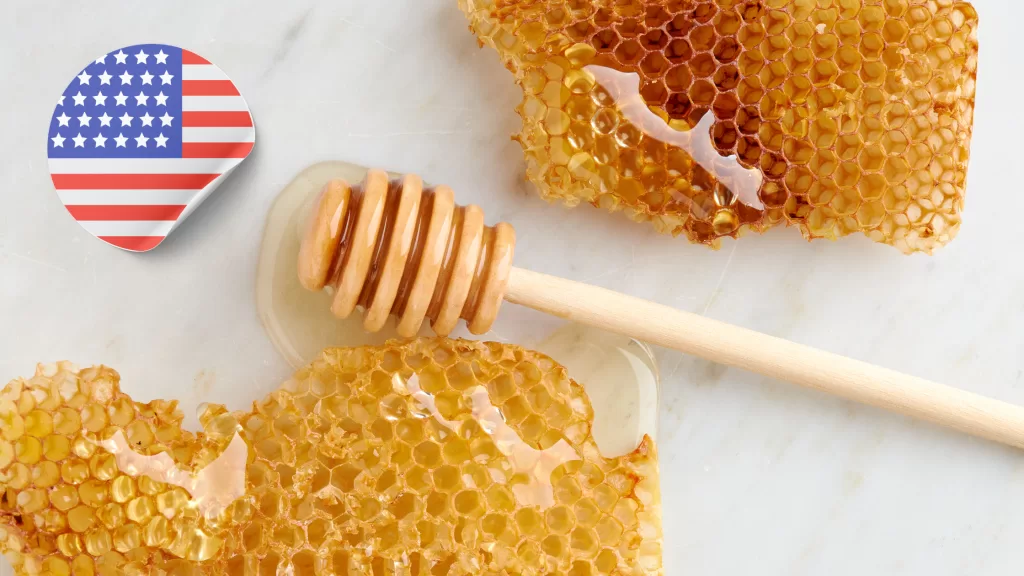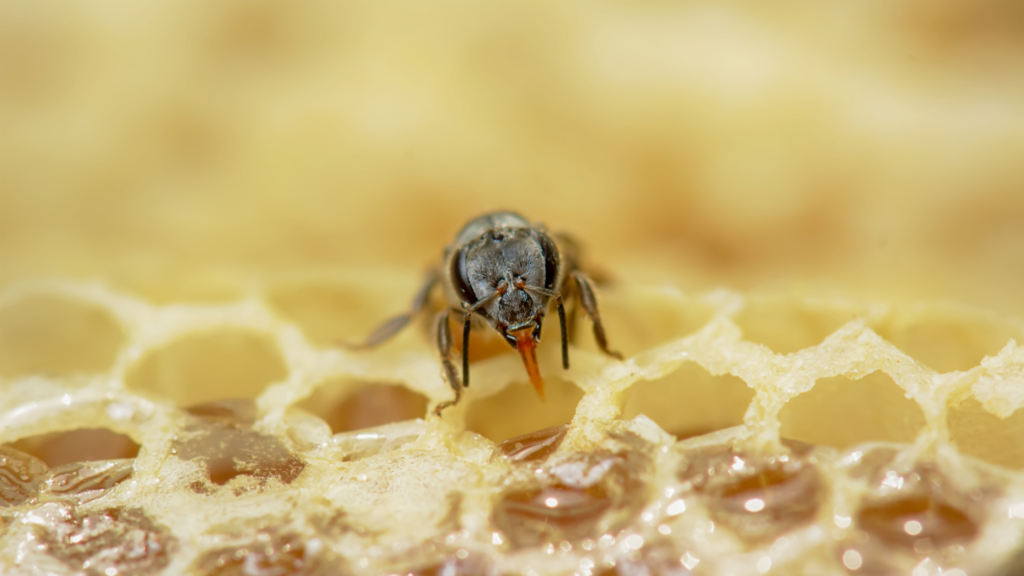Honey Bee Anatomy
Anatomy of a Bee: An Overview of the Honey bee's Anatomy and Its Functions
Honey bees are fascinating creatures that play a crucial role in pollination and honey production. To appreciate their complexity and understand their remarkable abilities, it’s essential to explore the anatomy of a bee. In this article, we will provide an overview of the honey bee’s anatomy, highlighting the structures and functions that contribute to their incredible capabilities.
Honey Bee Anatomy:
The external anatomy of a honey bee includes several distinct features that contribute to its survival and functionality:
- Head: The head contains compound eyes, antennae, and mouthparts. Compound eyes provide excellent vision, enabling bees to navigate and locate flowers. The antennae play a crucial role in sensing and detecting chemical signals.
- Thorax: The thorax is divided into three segments: the prothorax, mesothorax, and metathorax. Each segment bears a pair of legs used for walking, collecting pollen, and manipulating food. The mesothorax and metathorax also house the wings, enabling flight.
- Abdomen: The abdomen consists of several segments and is responsible for digestion, reproduction, and storing honey. The stinger, found in female worker bees and the queen, is also located in the abdomen.
Inside the honey bee’s body, various organs and structures contribute to its physiological functions:
- Digestive System: The digestive system includes the mouthparts, salivary glands, crop, stomach, and intestine. Bees collect nectar and pollen, which are transformed into honey and bee bread through enzymatic processes. The nutrients derived from these food sources fuel their activities and nourish the colony.
- Respiratory System: Bees breathe through a network of tiny tubes called tracheae. Oxygen enters the body through spiracles located on the sides of the abdomen, and carbon dioxide is expelled through the same openings.
- Circulatory System: Bees have an open circulatory system. Their main circulatory organ, the dorsal vessel, pumps hemolymph (a fluid similar to blood) throughout the body. Hemolymph transports nutrients, hormones, and immune cells.
- Nervous System: The nervous system consists of a brain, ventral nerve cord, and ganglia. Bees have a highly developed sensory system, allowing them to perceive and respond to their environment. They can detect odors, colors, and polarized light, aiding in foraging and communication.
- Reproductive System: The reproductive system differs between worker bees and the queen. Worker bees have underdeveloped reproductive organs, while the queen possesses an extensive reproductive system, including ovaries and a spermatheca for storing sperm.
- Wax Glands: Wax glands are specialized structures located on the underside of the abdomen. Worker bees produce wax from these glands to construct the hexagonal cells of the comb, providing a structure for brood rearing and honey storage.
In addition to the major anatomical features, honey bees possess several specialized structures that contribute to their survival and social structure:
- Proboscis: The proboscis, a long tube-like tongue, allows bees to collect nectar from flowers. They extend and retract it to reach deep into flowers’ nectar-producing structures.
- Pollen Baskets: Worker bees have flattened areas on their hind legs called pollen baskets or corbiculae. These structures enable bees to collect and transport pollen back to the hive for food storage.
- Stinger: The stinger is a defensive structure found in female worker bees and the queen. It contains a venom sac and barbed stinger that can deliver venom when used for defense.
The anatomy of a honey bee is a marvel of intricate structures and adaptations that contribute to its survival, foraging capabilities, and colony functioning. From the compound eyes and antennae that aid in navigation and communication to the specialized mouthparts for collecting nectar and pollen, each anatomical feature plays a crucial role in the bee’s life. Understanding the honey bee’s anatomy helps us appreciate their remarkable abilities and underscores the importance of protecting these vital pollinators in our ecosystem.
More From The Hive:

A Comprehensive Guide to Australian Honey: Types, Production, and Benefits
Australia is home to some of the world’s finest honey, known for its unique flavors, exceptional quality, and health benefits. Thanks to its diverse flora and pristine natural environment, Australia produces honey that reflects the rich biodiversity of its landscapes. Whether it’s the famous Manuka honey from the Leptospermum trees

An In-Depth Guide to Honey in the United States of America (USA): Types, Production, and Benefits
Honey, one of nature’s sweetest treasures, has been an integral part of human diets and cultures for thousands of years. In the United States of America (USA), honey production is not only a thriving industry but also a testament to the country’s diverse ecosystems. From the tropical blossoms of Florida

The Small Honey Bee (Apis florea): A Comprehensive Guide to One of Nature’s Tiny Pollinators
The Small Honey Bee, scientifically known as Apis florea, is one of the lesser-known species of honey bees, yet it plays a vital role in the ecosystems of Asia and parts of the Middle East. Despite its size, the Apis florea bee is a remarkable pollinator, and its unique biology

Exploring the Sweet Diversity of Canadian Honey: A Guide to Types and Flavors
Canada is home to a rich tapestry of landscapes and climates, each contributing to the unique flavors and types of honey produced across the country. From the prairies of Alberta to the forests of British Columbia, Canadian honey reflects the diverse flora that bees visit. In this blog, we will

The Rock Honey Bee (Apis laboriosa): Guardians of the Himalayan Honey
The Rock Honey Bee (Apis laboriosa) is an awe-inspiring species that thrives in the rugged landscapes of the Himalayas, where it builds massive nests on vertical cliffs. Known for producing highly prized wild honey and for its ability to endure extreme mountain conditions, this bee species has captivated researchers, beekeepers,

The Giant Honey Bee (Apis dorsata): Nature’s Fearless Honey Maker
The Giant Honey Bee, scientifically known as Apis dorsata, is a remarkable species native to South and Southeast Asia. Known for its impressive size, bold temperament, and incredible honey-producing capabilities, this bee plays a crucial role in the ecosystem and supports human livelihoods. Despite its importance, the Giant Honey Bee
